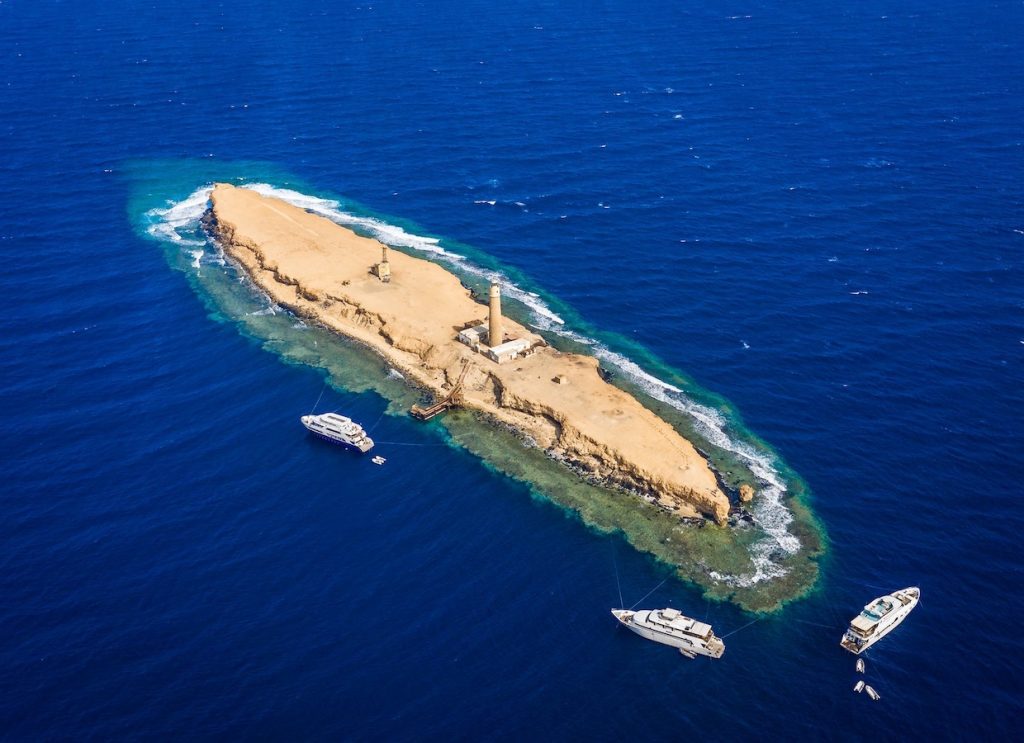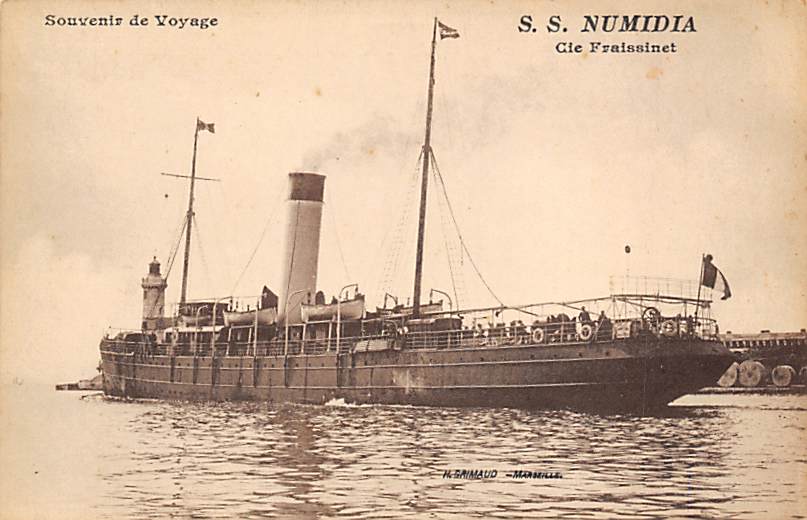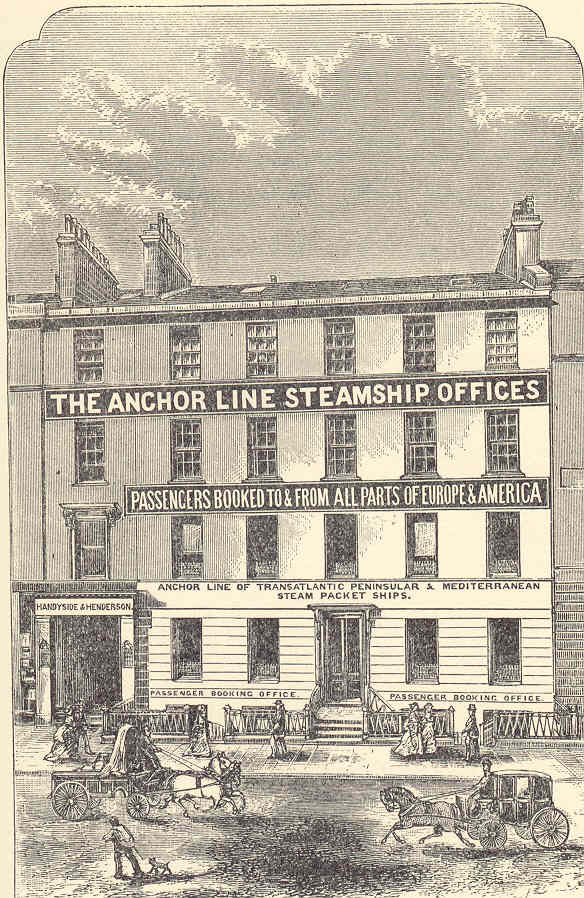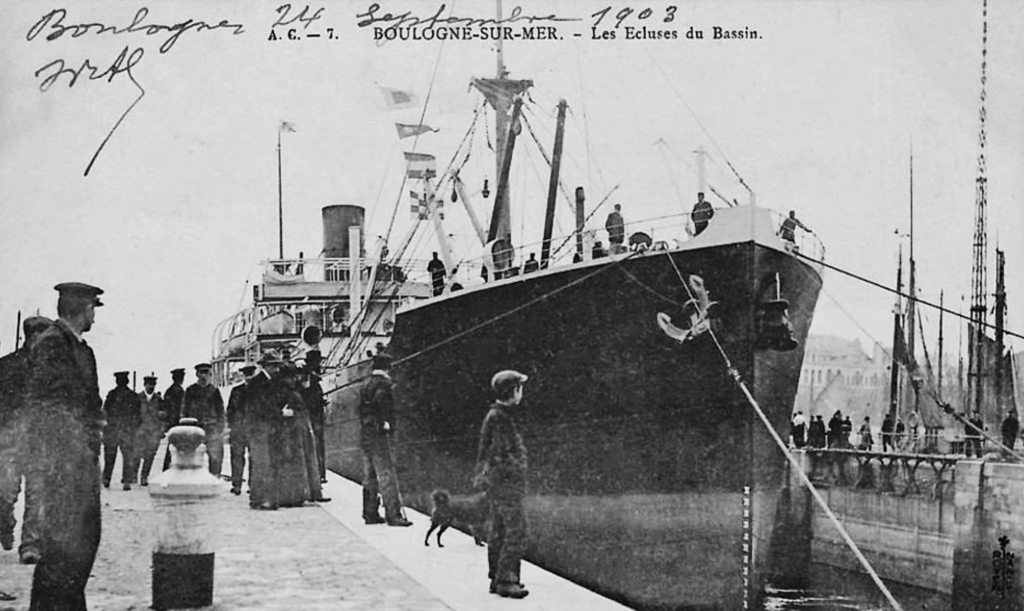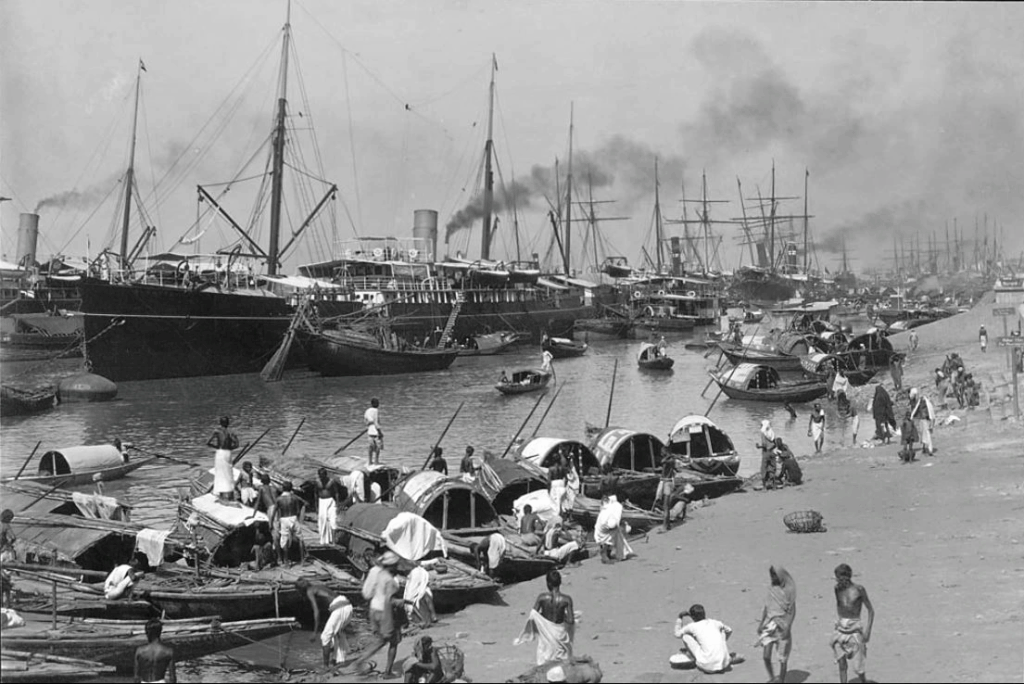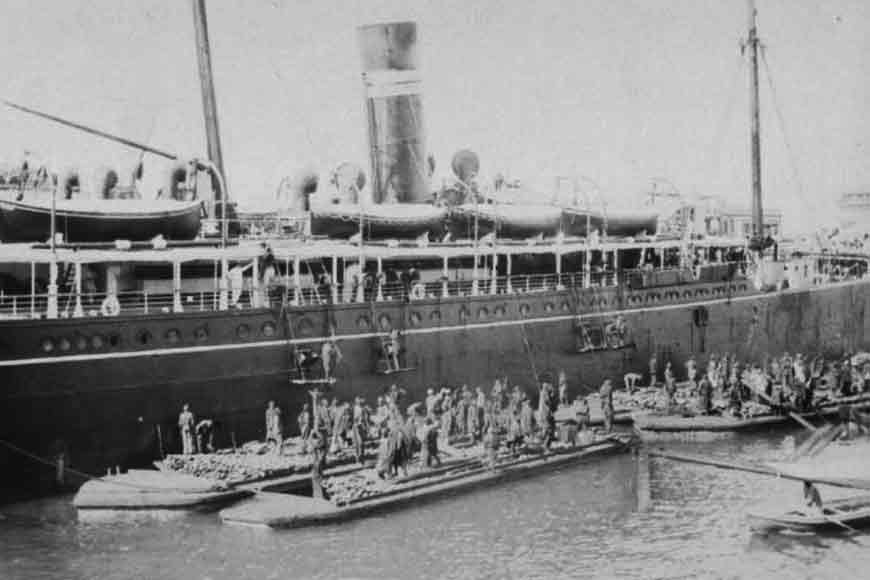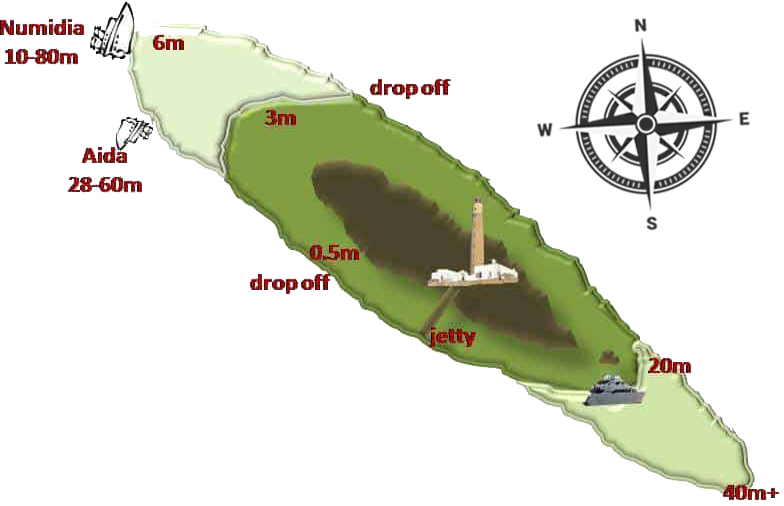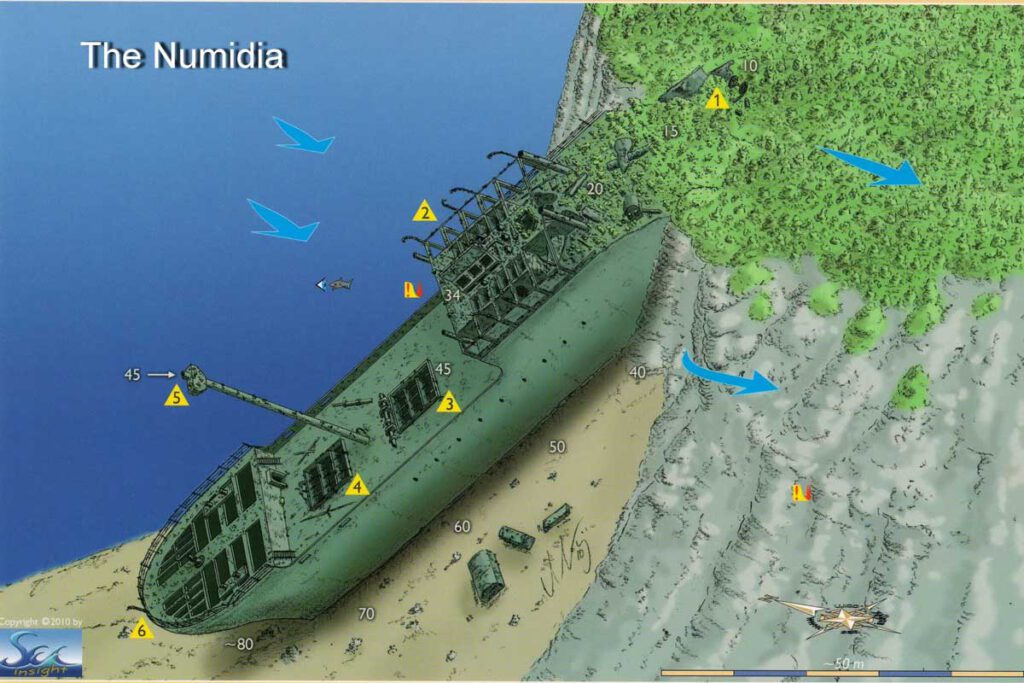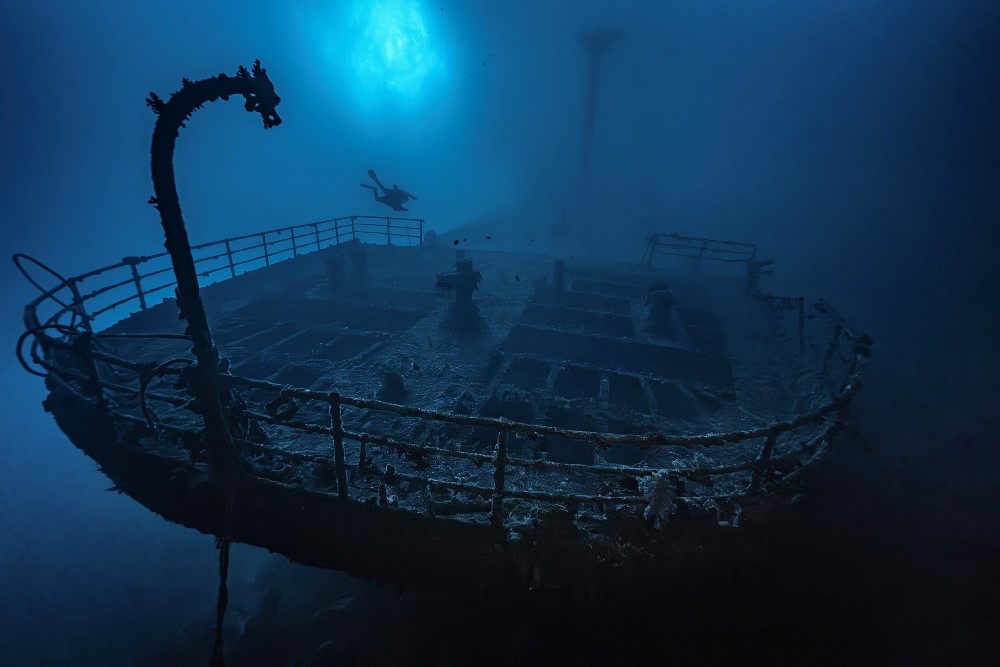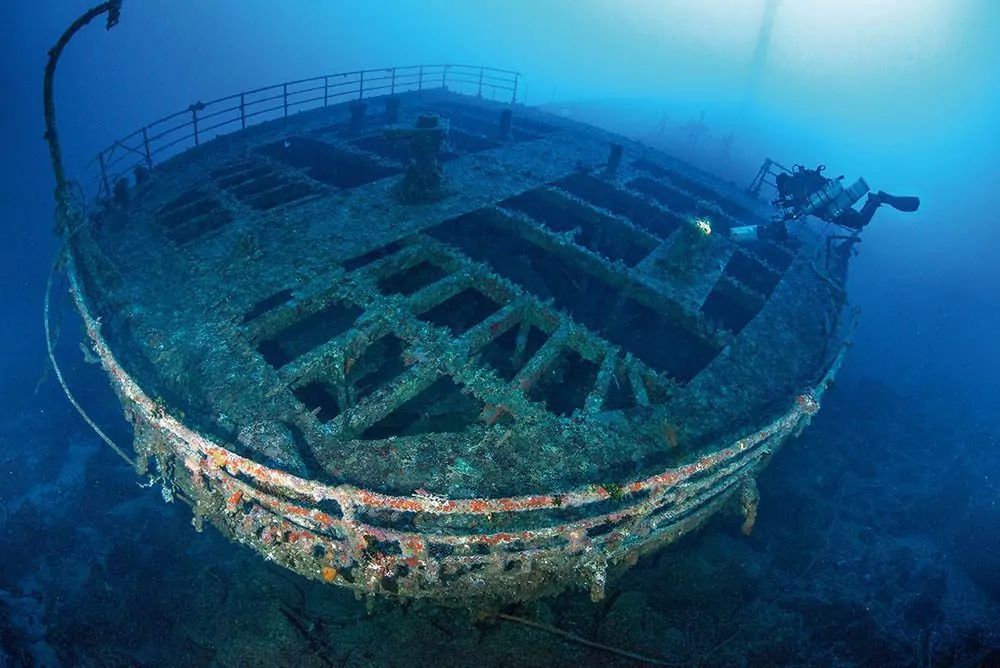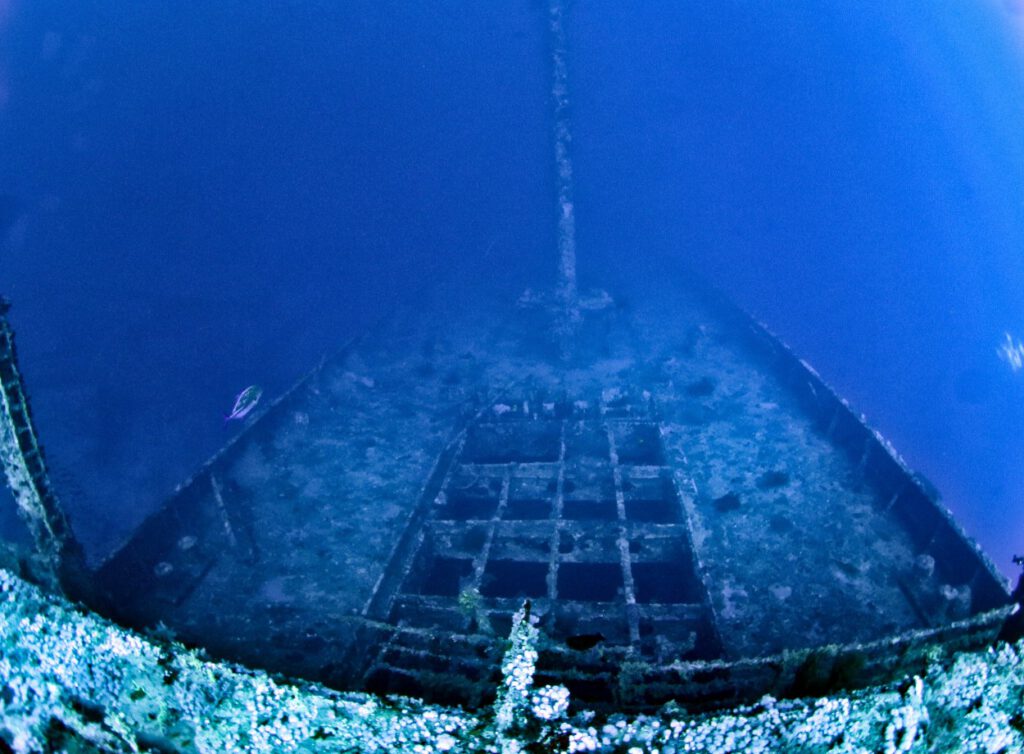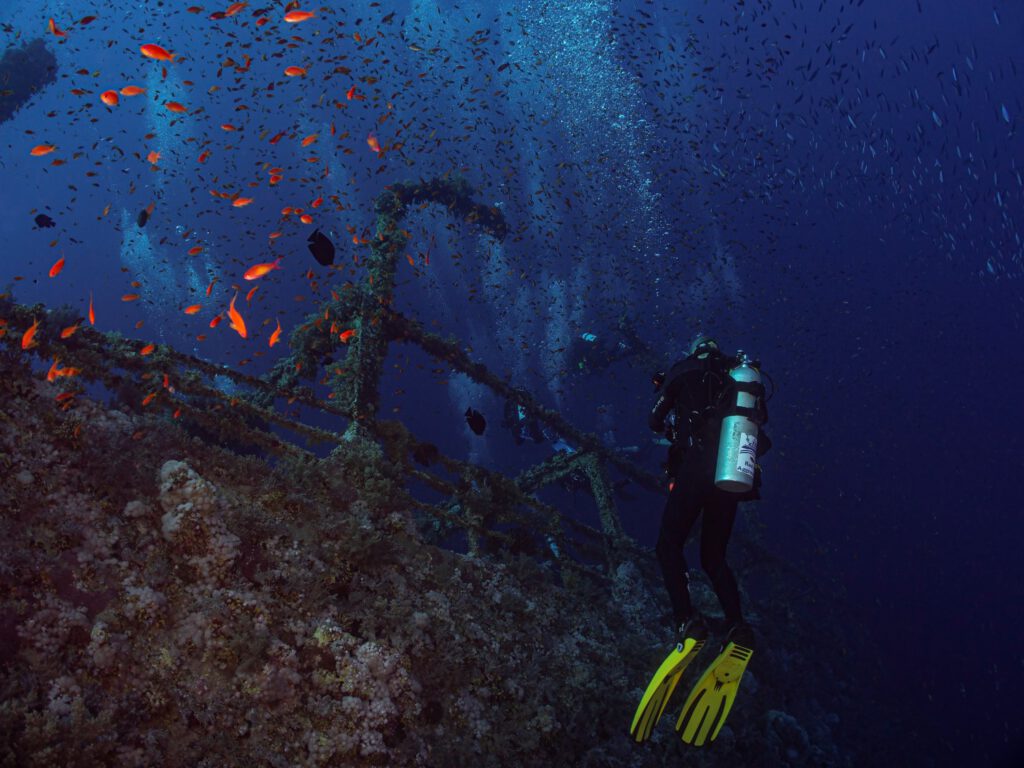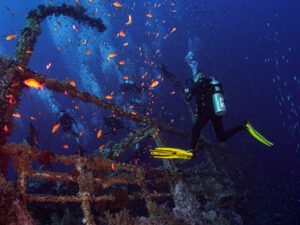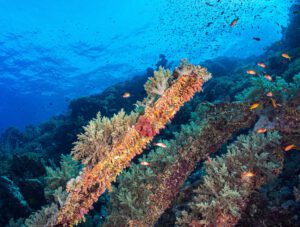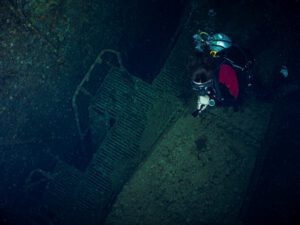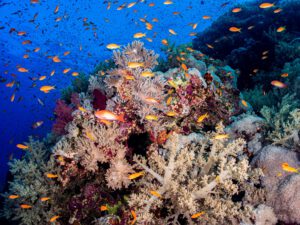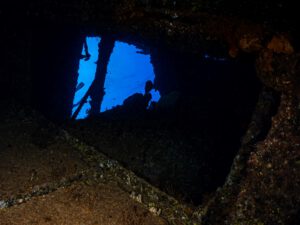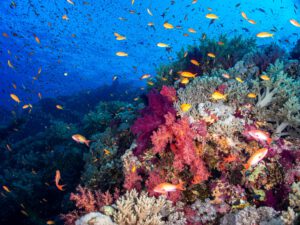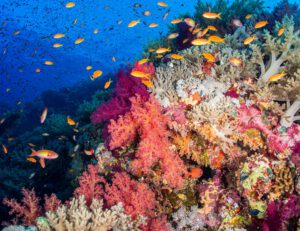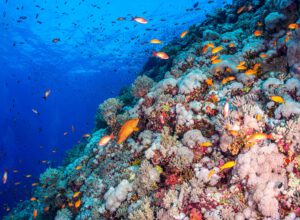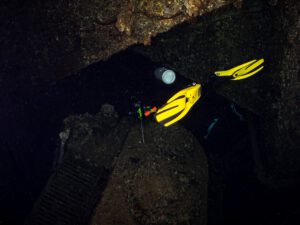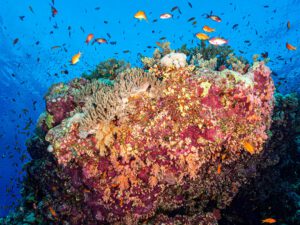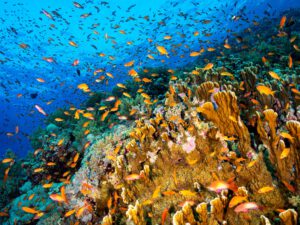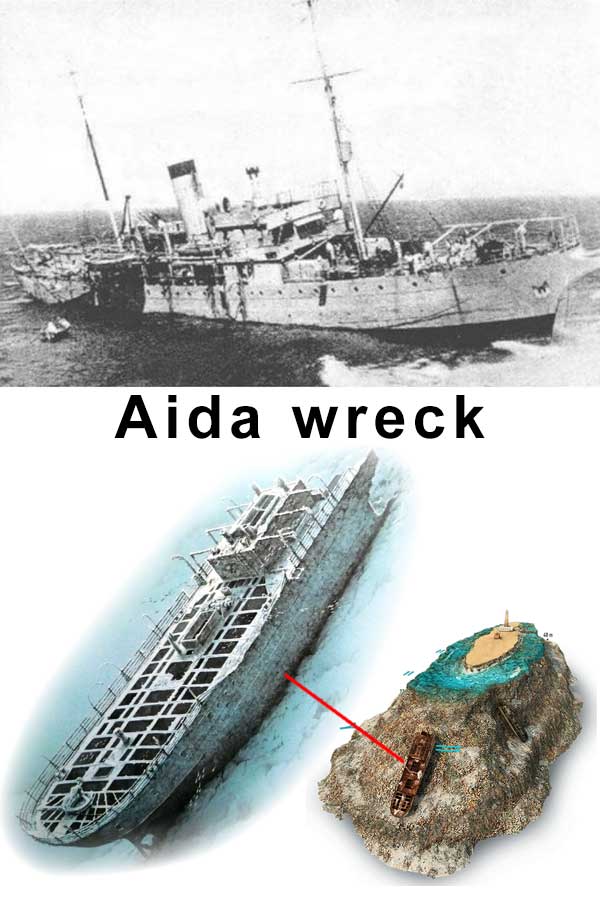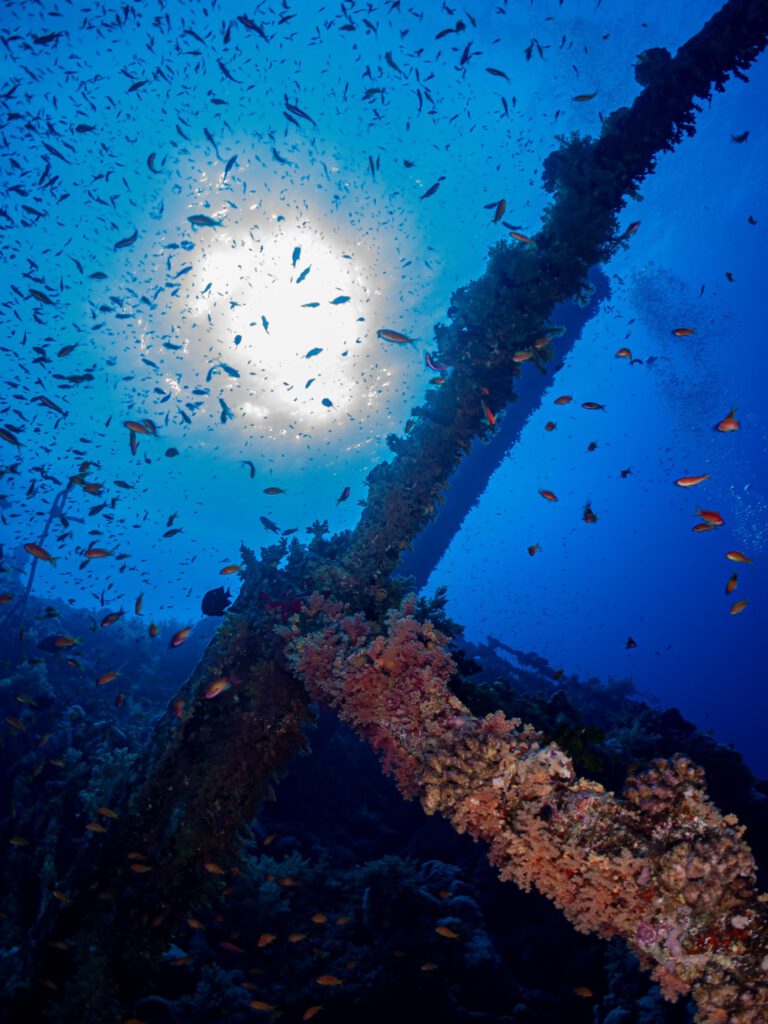SS Numidia
Big brother island - Red Sea - Egypt
The S.S. Numidia, a steam cargo ship built in 1901 for the Anchor Line Ltd, embarked on its fateful second voyage in July of the same year
It now lies on a depth between 8 and 84 meters

SS Numidia - Big brother island - Red Sea - Egypt
The Numidia’s maiden voyage was on 28 February 1901 departing from Glasgow under the command of Captain John Craig and sailing to Calcutta, making the return trip soon afterwards. The voyage, by all accounts was uneventful.
The second voyage of the ship would, however, prove to be her last.
The SS Numidia is one of the most spectacular and captivating wrecks to dive anywhere in the world. It lies at a dramatically steep angle, its stern at the deeper end, perched on the northern reef of Egypt’s Big Brother Island, somehow defying gravity by not sliding further into the deep blue abyss.
Over 125 years after its tragic sinking, most of its iron hull still remains remarkably intact, even including its tall mizzen mast, although now encrusted with layers of vibrant coral; while the wooden decks have rotted away allowing more light in and illuminating the rich variety of marine life that flourishes within the wreck.
The story & the dive
The data
• Name: SS Numidia
• Type : Steam Cargo / passenger ship
• Nationality: Scotland
• Last owner: Anchor Line Ltd., Glasgow, Scotland
• Builder: D. & W. Henderson & Co., Ltd., Meadowside Shipyard, Glasgow, Scotland
• Propulsion: Triple-expansion (3 cylinder) steam engine and a single shaft
• Date built: 04 February 1901
• Tonnage: 6,399 grt.
• Length: 137.4 meters
• Beam: 16.7 meters
• Draught: 9.2 meters.
• Max. speed: 12 knots
• Date of the wreckage : 20th of July 1901
• Current location: 26 19 00″ N, 34 50 00″E. (Big Brothers Island – Red Sea Egypt)
• Minimum Depth to Wreck: 8m (at Bow)
• Maximum Depth to Seabed: 84m+ (at stern)
• Access: Safari Boat
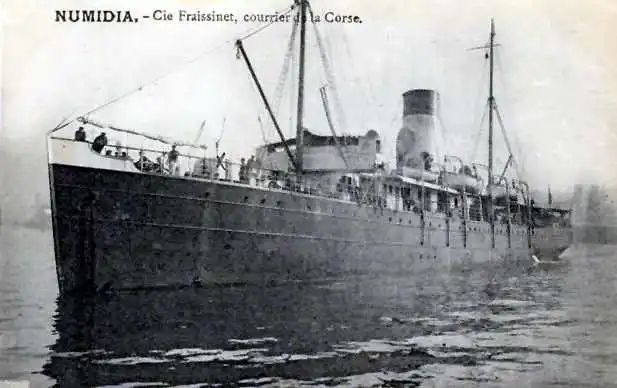
The SS Numidia in 1901
The history
The Numidia was, for its time, an impressively sized British cargo steamship of about 137 meters (449 feet) in length, roughly the combined length of two Boeing 747s, 16.7 meters (55 feet) in width or about the span of two London double decker buses; and with a weight of 6399 gross tons, it was the equivalent of 450 London buses !
She was constructed during the final months of Queen Victoria’s reign by D&W Henderson of Glasgow for the Anchor line and was finally launched on 4 February 1901, less than two weeks after the queen’s passing. Yet, despite the rather ominous timing, there was nothing to suggest the tragic fate that would soon befall the ship.
D&W Henderson (the D&W standing for David and William) had a stellar global reputation for building all types of ocean going vessel. Founded in 1869, the same year Egypt’s Suez canal opened, the company was a pioneer in the use of iron hulls, which provided much needed strength and durability, enabling its ships, including the SS Numidia, to withstand the toughest ocean conditions.
They were also innovators in developing more powerful and efficient steam engines for propulsion. Nevertheless, the SS Numidia retained two masts to utilize additional wind power and conserve fuel.
The SS Numidia was built on behalf of the Anchor line company.
The Anchor Line had its beginnings in 1838, started by Nicol & Robert Handyside, Nicol was the Russian Consul, an official appointed by the government of a country to look after its commercial interests and the welfare of its citizens in another country, although the “interests” of Russia at that time, expressly in Glasgow, even in Scotland in general were lost to me… However, in the 1890’s Russia completed their Trans-Siberian Railway pushing East, and the British were expanding our large-scale commercial activities in China through Hong Kong, and the “treaty ports” of China.
The Handyside brothers traded with Russia and the Baltic under charter arrangements and were merchant ship-brokers operating as N&R Handyside &Co
The Numidia also had a ,near identical, sister ship called the SS Assyria, she was also built by G&W Henderson at the same Meadowside yard in Glasgow and launched just two months earlier.
The SS Assyria was Owned by T. & J. Brocklebank, Ltd.
On the 26th of August 1917, the British steam merchant ship SS Assyria was torpedoed and sunk by the German submarine UB-61. The incident occurred 34 miles northwest of Tory Island while the Assyria was en route from Glasgow to New York with general cargo.
Survivors were rescued by the Grimsby-class sloop HMS Leith and landed at Liverpool.
The attack resulted in the loss of 17 lives, including 15 crew members and two Royal Navy personnel.
The story
After she was launched, Numidia made a safe return journey from Liverpool to Calcutta, passing through the Suez canal and Red Sea, without any noticeable incident. On 6 July 1901, she set off on her second voyage. In a strange twist of fate, much like her launch, the date coincided with the death of a European monarch, this time the assassination of King Umberto 1 of Italy by an anarchist on the very same day, but Captain John Craig, an experienced seaman in his mid-50s, and the ship’s crew of 78 were likely unaware of the news as the ship left Liverpool, once again bound for Calcutta.
By the morning of Friday the 19 July, the Numidia had passed through the Suez Canal and was heading south into the Red Sea; and by sunset, the ship was close to Shadwan Island, located just to the north east of where El Gouna stands today, at the mouth of the Gulf of Suez.
At about 01:00 on Saturday the 20th, Captain Craig spotted the distant light from the Big Brother lighthouse. Though weary from a long shift, he charted a course that would take the vessel about a mile west of the island and then retired to get some sleep, leaving the ship’s navigation and operation in the charge of Second Mate James Tulloch, the Officer of the Watch (OWW).
Unfortunately, it appears that sometime after 1:30 AM, when Tulloch last altered the ship’s course, he may have dozed off. Worse, the course change was insufficient to avoid the island. Just after 2 am, everyone aboard, including Captain Craig, was suddenly jolted awake by the defeaning crunch of metal as the Numidia struck the rocky shore. Craig immediately rushed to the bridge, shouting orders to reverse the engines to free the ship from the reef, but by 4 am the ship’s bow was not only still lodged fast on the reef but was also breached, with water pouring in to the forward number one hold.
Other vessels quickly arrived at the scene, and some of the crew were able to disembark onto the island. Meanwhile, another attempt was made to refloat the Numidia, but with water flooding in faster than it could be pumped out, Captain Craig soon realized that further salvage efforts would be futile. He then gave the order for the crew to begin preparations for rescuing the ship’s cargo — a task that would take an additional seven weeks to complete.
Day by day, as the crew continued unloading the cargo, the ship’s condition deteriorated and at some time after the cargo had been offloaded, the relentless tides, repeatedly forcing the aft of the Numidia up and down, combined with occasional storms, eventually caused the ship to break in two, roughly in the middle. The bow remained lodged on the shallow reefs, while the aft section began to sink stern-first, sliding down the steep coral wall. Fortunately, the stern came to rest on a small stretch of relatively flat seabed about 80 metres below sea level.
What happened to the Captain and the Second Mate after the sinking?
An official inquiry into the sinking of the Numidia was held by the Board of Trade in Glasgow in October 1901. The inquiry concluded that Captain John Craig had failed to make a sufficient course adjustment before retiring for the night to ensure the ship’s safe passage around the island and that he should have stayed on the bridge until the ship had safely passed Big Brother.
However, the inquiry ultimately placed the blame on Second Mate James Tulloch, who was found responsible for the failure to navigate around the island. It determined that he failed to inform the Captain when he altered the ship’s course at 1:30 AM and had likely fallen asleep soon afterwards. As a result, Tulloch’s license was suspended for nine months.
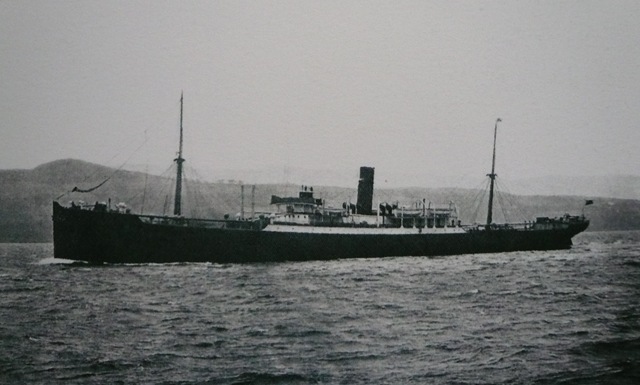
SS Numidia
Wreck's current location
The Numidia wreck rests just off the northern shore of Big Brother Island ( (known locally as El Akhawein), a tiny strip of Egyptian land measuring just 200 metres (656 feet) long, roughly the length of a small container ship, and just 20 metres (66 feet) wide, about the same length as a standard articulated city bus.
It’s topped by a striking cemented stone lighthouse built in 1883, adding another touch of history to its otherwise rugged and bleak appearance.
On a map, you’ll find it approximately 67 kilometres (42 miles) east north east of the Egyptian coastal town of El Quseir.
The island lies just one kilometre (0.6 miles) north of its even smaller neighbour, Little Brother Island. From space both islands appear like tiny specs so far off the Egyptian shore that they are about a third of the way across the Red Sea.
The approximate geographic coordinates of the wreck are 26° 19′ 00″ N / 34° 50′ 30″E, though in case of any error, please don’t rely on these for navigation.
The wreck today
Unlike many of the reefs off Sharm El Sheikh, which have been negatively affected by commercial tourism, the reefs around Big Brother Island, including the reef wall where much of the Numidia wreck lies, remain remarkably pristine. The water visibility here is generally excellent, with an average of around 20 metres (65 feet). The wreck lies in shade during the morning, so the colours at shallower depths are more vibrant in the afternoon.
Despite the slow rise in sea temperatures, increased acidity, and the growing number of diving excursions to the island, the area’s coral reefs have shown impressive resilience. Divers can enjoy spectacular gorgonian sea fans, beautiful yet endangered bush-like black coral trees, and a rich variety of soft corals, with a diving torch illuminating them in vivid colours.
The wooden decking has disappeared, leaving a steel framework that allows easy access to all parts of the ship. The rearmost holds are wide open, and the rear mast is intact as far as the crosstrees.
Over the course of the 12+ decades since the Numidia sank, its bow section has become almost entirely enveloped and submerged within the coral.
However, the intact aft section still stands proud over the seabed, although it is also gradually becoming increasingly overgrown with corals of every type and colour, so much so that the ship’s portholes are barely distinguishable. However, certain areas, such as the holds, starboard gangway, engine room, bridge, and some cabins, might still be accessible (always check with your dive guide to confirm). These areas may offer the chance to dive through them with caution.
Alternatively, if you prefer to view the wreck from the outside, it’s generally advisable to stay to the starboard side (right side when facing the bow/front of the ship) due to strong north-to-south currents. The currents, however, can vary, so as always when diving, please consult your dive guide first and heed their professional advice
The dive
Numidia Wreck is a Fabulous shipwreck that offers an exciting diving experience. The stern rudder and propeller are intact but deep, while the top of the bridge and accommodation deck is shallowest at 8-12m.
There are also large engine room air vents – broken and intact – and several large deck winches but no cargo booms. The lifeboat davits on both sides are swung out, making for an impressive sight. The surrounding marine life includes colorful corals, sea fans, and a variety of fish species.
Only scattered remnants of the Numidia’s higher bow structure remain in relatively shallow waters, just 8 meters (26 feet) below the surface. Over the years, it has been broken up by storms and strong currents, but the aft section of the ship remains remarkably intact. Assuming you have the necessary experience and equipment, here’s what you can expect to see as you descend
Note that the mensioned depths are a rough estimate.
• 8 metres (26 feet):
You’ll encounter the first pair of coral encrusted train wheels, originally intended for use on the Indian Imperial Railways. These had been tied to the deck during the voyage and were presumably either too difficult or not sufficiently profitable to salvage. You might also notice other wreck fragments lying around at this and also shallower depths, though many now fully covered by the coral.
• 12 metres (39 feet):
Another pair of train wheels comes into view.
• 20 metres (66 feet):
At this depth you’ll find the remains of the cabins, the bridge and the funnel. Two of Numidia’s lifeboat davits remain in a swung out position as if frozen in time.
• 40 metres (131 feet):
Here, you’ll be over the engine room. If you can safely dive down, you’ll be able to see the original triple expansion steam engine with its three cylinders and pressure gauges still visible.
WARNING: The following depths are beyond recreational diving limits. Forcetfied technical diving only.
• 46 metres (151 feet):
The entrance to hold number 3, the first of the two aft cargo holds.
• 50 metres (164 feet):
You’ll reach the base of Numidia’s mizzen mast, still standing at a proud 90 degrees from the steeply inclined ship to a height of about 45 metres below sea level. The large deck winches for the cargo booms are also visible, although sadly the booms themselves have disappeared.
• 80 metres (262 feet):
Finally, you’ll reach Numidia’s rounded aft, including its rudder and propeller. Amazingly, there is still some coral here but much less than at 50 metres and shallower depths
The ship lies perpendicular to the reef with the bow lying at around 8-meters, with the rest of the ship descending at a steep angle to a depth of approximately 80-meters.
Due to the constant water currents here, the wreck is engulfed by soft and hard corals. The top of the wreck is marked by a pair of train axles and wheels which had been carried on the ship’s main deck. Descending from here to the ship itself, there are two large cargo holds, now empty, lying forward of the ship’s superstructure.
The wreck can be easily accessed.
Aft of hold No. 2 the remains of the superstructure can be explored. It too, was constructed of wood on steel decking so that all that remains are the basic steel support components of the superstructure.
Aft of the superstructure, at a depth of around 50 meters, the ship’s funnel can be found, with the engine room located directly beneath it. Cargo holds No. 3 and 4 are located further aft of the funnel and are similar to the forward holds.
The remains of the aft mast are still upright with deck winches located below on the rounded stern, beneath which lie the propeller and rudder at 80 meters.
The abundance of marine life here is amazing.
Nearby this wreck is also another exceptional shipwreck….the wreck of the Aida located only 100 meters away!
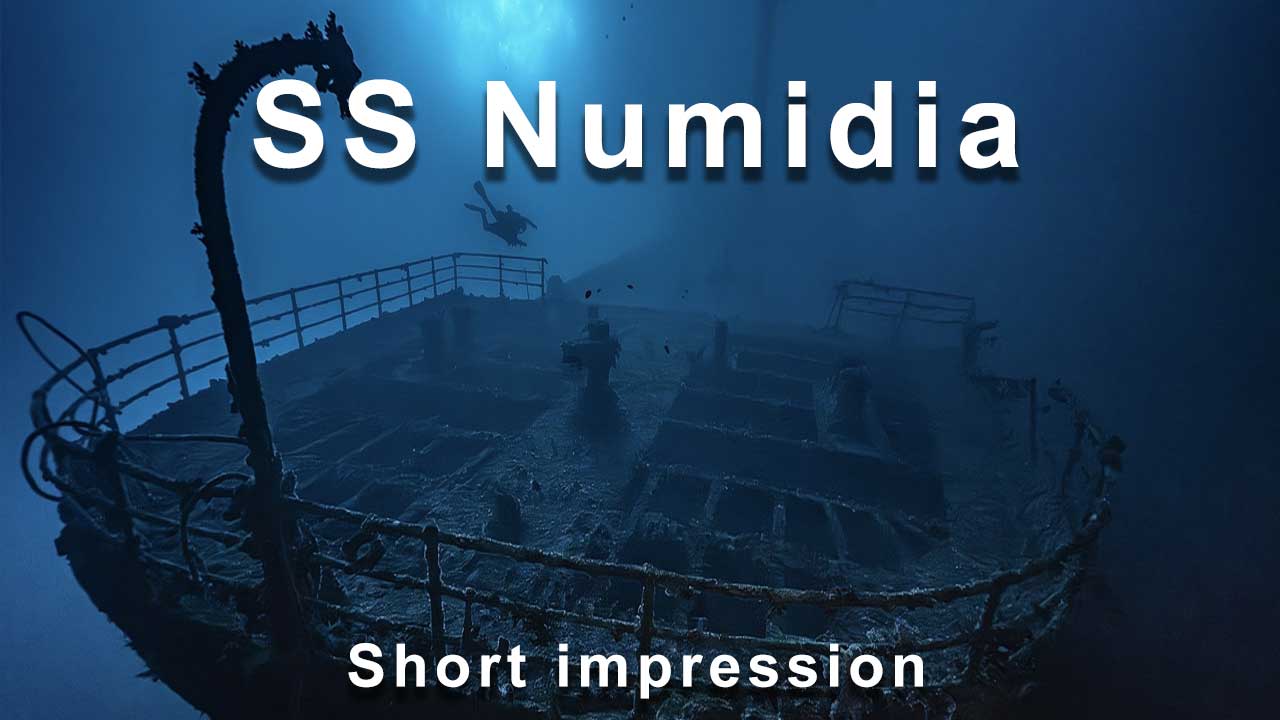
Short impression of the SS Numidia
(Click to play)
Flora & fauna
The presence of such a large wreck and Big Brother Island’s vibrant intact reef system, with steep drop-offs into the deep blue on all sides, guarantees that you’ll encounter one of the most life-rich environments on the planet. You have an excellent chance of coming across many of the Red Sea’s most fascinating marine species, including:
Manta rays (Manta birostris), Great barracudas (Sphyraena barracuda), Brightly coloured clownfish (Amphiprioninae), Shoals of small brightly coloured anthea (Pseudanthias), giant trevallies (Caranx ignobilis), Napoleon wrasses (Cheilinus undulatus), Grey reef sharks (Carcharhinus amblyrhynchos), Self confident oceanic whitetip sharks (Carcharhinus longimanus) often near the surface, Packs of coral groupers (Plectropomus), Hawksbill sea turtles (Eretmochelys imbricata) and tons of colorfull hard- and softcorals!
Conclusion
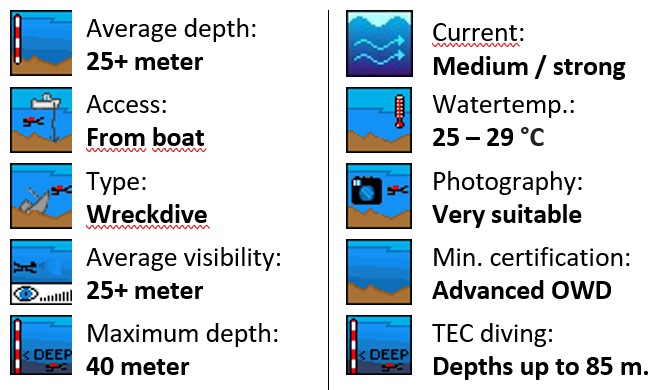
Diving at the Numidia wreck is best suited for advanced divers. However, less experienced divers with some prior experience may also enjoy it if they focus on the shallower sections of the wreck and carefully follow their dive guide’s advice, as the currents can be quite strong.
The deeper parts of the wreck, which plunge to depths of 80 meters, require specialized training, proper equipment, and substantial diving experience. Additionally, be aware that rough seas and powerful currents can sometimes make diving here difficult or even dangerous.
NOTE: The Brothers Islands form one of Egypts “Marine Parks” – for which an additional charge is levied prior to leaving port. With a Military Base on the Island, the Brothers are also a “restricted area” and this means no landing at all. Occasionally, the Islands are closed to Diving – sometimes at short notice…


